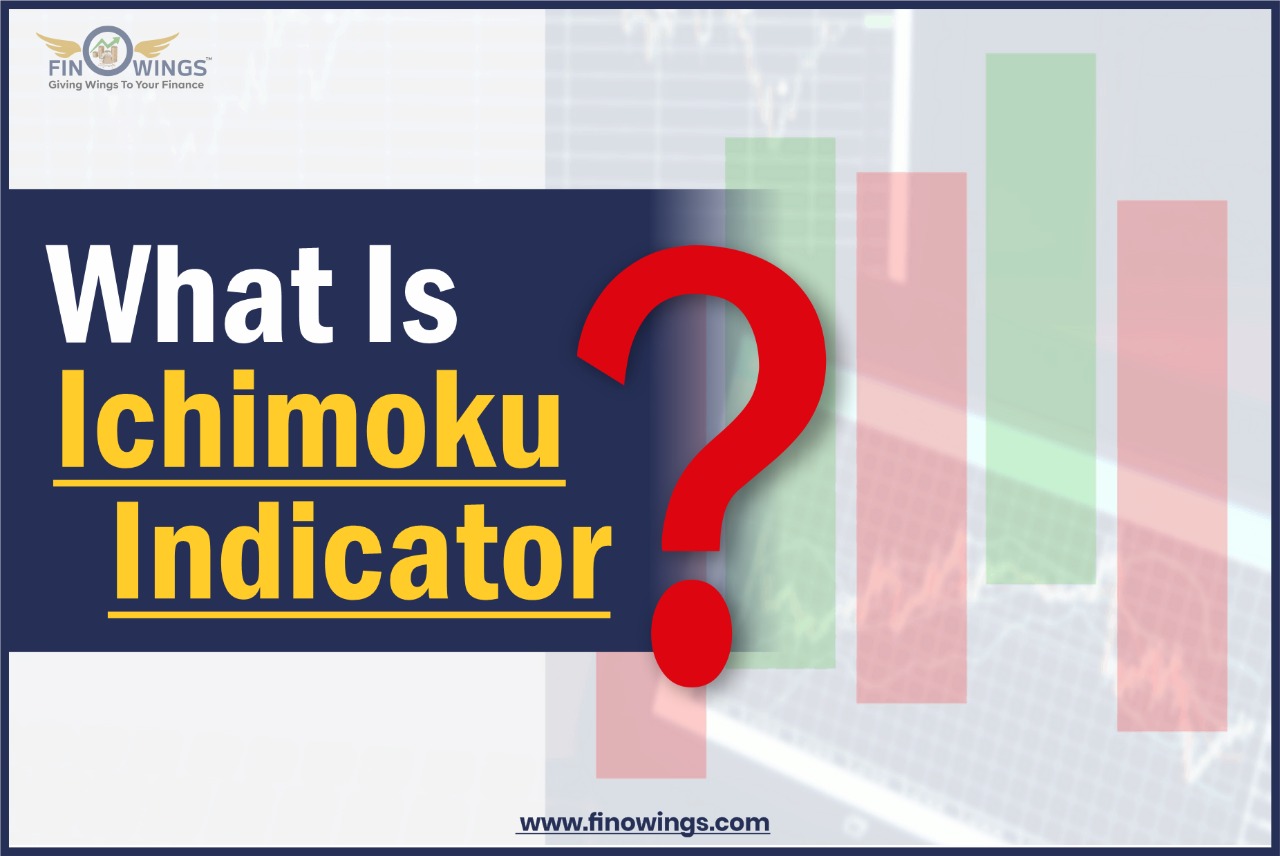Home >> Blog >> What is Ichimoku Indicator?
What is Ichimoku Indicator?

Table of Contents
Introduction:
The Ichimoku Cloud, also known as Ichimoku Kinko Hyo, is a technical indicator primarily used by traders and analysts to define support and resistance levels and other essential information such as identifying trend direction and gauging momentum and providing trading signals. Sometimes this indicator is also defined as an "All in One" indicator. The literal translation of Ichimoku Kinko Hyo means "one look equilibrium chart". This means that chartists can identify the trend at a glance, and look for potential signals within that trend.
The Ichimoku Indicator is a powerful trading tool, many market experts consider this indicator to be the most credible trend indicator compared to other indicators of that type, for example, moving averages. The Ichimoku Cloud contains more data points than other indicators, which increases the accuracy of forecast price moves. But sometimes traders feel overwhelmed seeing all the lines and information that the indicator gives them and then often misunderstand the Ichimoku signals.
The Ichimoku Cloud is a technical analysis indicator developed by a Japanese journalist, Goichi Hosoda, who reportedly spent 30 years working on it and published it in the late 1960s. For inexperienced traders, the Ichimoku Cloud may seem complicated when viewed on a price chart at first glance. However, for traders who know how to read and interpret the cloud, it is a straightforward indicator; the concepts are easy to understand and the signs are well-defined. The Ichimoku Cloud Indicator is an excellent tool for any strategy, especially since it can be used alone, as a sufficient tool for technical analysis. The indicator takes various trading averages and plots them on charts while using statistics to calculate a "cloud" that attempts to predict the point where the script's price will find support or resistance at a future date.
How the Ichimoku is calculated?
Ichimoku is an important feature of technical analysis in cloud trading and is used primarily to identify buy and sell signals. Five plots are making up the Ichimoku Cloud Indicator. All of these can serve as flexible support or resistance levels, whose crossovers can also be considered as additional signals. Investors and traders can identify the trend and look for potential trading signals. A bullish crossing of one of the Ichimoku levels indicates a buy signal, whereas a bearish crossing indicates a sell signal. For bullish signals, this trading strategy sets three parameters. Firstly, the trend is bullish when the price reaches above the bottom line of the cloud. Second, a bullish signal is triggered when the price reverses and crosses the conversion line. And third, when the price moves below the baseline the trend is bullish.
Four out of the five plots within the Ichimoku Cloud are based on the average of the high and low over a given period. Their names and calculations are:
1. Tenkan-Sen (Conversion line, blue)
2. Kijun-Sen (Baseline, red)
3. Senkou Span A (Leading span A)
4. Senkou Span B (Leading span B)
5. Chikou Span (Lagging span)
The Kumo (cloud) is a central element of the Ichimoku system and represents support or resistance levels. It is formed by the leading span A and leading span B.
Ichimoku formula:
1. Conversion Line (Tenkan sen) = (9-PH+9-PL)/2
2. Base Line (Kijun sen) = (26-PH + 26-PL)/2
3. Leading Span A (Senkou span A) = (CL + BL)/2
4. Leading Span B (Senkou span B) = (52-PH + 52-PL)/2
5. Lagging Span (Chikou Span) = Close Plotted 26 periods in the past
In the above formulae
PH = Period High; PL = Period Low; BL = Base Line; CL = Conversion Line
Chikou represents the market's past, Kijun and Tenkan represent its present, and Kumo aims to represent its future.
How to Calculate the Ichimoku Cloud:
The high and low are the highest and lowest prices observed over the period—for example, in the case of the conversion line, the highest and lowest prices observed over the past nine days. By adding the Ichimoku Cloud Indicator to the calculation chart, traders will get the results. However, if one wants to do these calculations manually, Here are the steps:
· Calculate the conversion line and the baseline.
· Calculate Leading Span A based on prior calculations. Once computed, this data point is plotted 26 periods into the future.
· Calculate Leading Span B. Plot this data at a point 26 periods in the future.
· For the lagging span, plot the closing price 26 periods past the chart.
· The contrast between Leading Span A and Leading Span B is coloured to form a cloud.
· When Leading Span A is over Leading Span B, paint the cloud green. When Leading Span A is below Leading Span B, colour the cloud red.
· The above steps will create a data point. To create the lines, as each period ends, revisit the steps to create new data points for that period. Lines and connect the data points to each other to create a cloud appearance.
Significance of the Ichimoku Indicator:
Chart pattern formation and candlestick formation are helpful, profit-generating tools in any successful trading system, but require more for traders who need additional data. Based on historical data from moving averages, Ichimoku is a perfect visual representation of key data; Ichimoku is prevalent among Japanese Forex traders. It is also part of the time theory, target price theory and wave movement theory. Unlike other indicators, the Ichimoku takes time into account, not just price, similar to some of the more popular theories, first popularized by renowned trader William Delbert Gann. This gives traders an edge to earn a lot of money by applying winning trading strategies regularly.
Limitations of Using the Ichimoku Cloud:
Some of the limitations of using the Ichimoku Cloud Indicator are given below:
· Since there are so many components in this indicator, it becomes difficult for the trader to analyze the stock.
· It is based on historical data whereas two data points are plotted in future. Nothing in the formula is inherently predictive. The averages are just being plotted in the future.
· Since the price stays above and below the cloud for a long period, the cloud may become irrelevant in the long term. At such times, conversion lines, baselines and their crossovers become more critical, as they usually stay closer to the price.
Conclusion:
Overall, there is no doubt that the Ichimoku Cloud Strategy is a bit complicated but it is also a very solid, all-in-one indicator that provides a lot of information at once. The Ichimoku Cloud is a comprehensive indicator that needs to be understood in detail before it can be implemented so that it can generate a clear signal. The chartists can first determine the trend by using the cloud. Once the trend has been established, the appropriate signals can be determined using a price plot, conversion line and baseline. The classic signal is to seek the conversion line to cross the baseline. While this signal can be dominant, it can also become rare in a strong trend. Looking for the price to cross the baseline (or even the conversion line) may yield more signals. The Ichimoku Cloud can also be used in combination with other indicators. Traders can use the cloud to identify the trend and then use the classic momentum oscillators to identify overbought or oversold conditions.
Author
Frequently Asked Questions
It is developed by Goichi Hosoda, a Japanese journalist who published it in the late 1960s. The Ichimoku chart is a technical analysis indicator that shows essential information such as trend direction and momentum.
To maximize their risk-adjusted returns, traders should use the Ichimoku Cloud in conjunction with other technical indicators. The indicator is often combined with the Relative Strength Index (RSI), which can be used to confirm momentum in a certain direction.
Unlike other indicators, the Ichimoku indicator is believed to give reliable buy and sell signals. Because the Ichimoku cloud contains more data points than other indicators, it increases the accuracy of forecasting price moves.
The truth is that not all experienced traders use indicators. Traders who depend on technical analysis certainly include indicators in their strategies. However, some traders keep the use of indicators to a minimum and some do not use them at all.




.webp)










